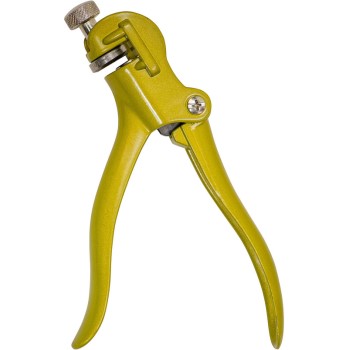Learning to Sharpen Saws
I've been wanting to add a few saws to the "toolbox." And, rather than spend a bunch of dough, I thought that I'd try to refurbish some used backsaws. Though I will more than likely purchase a couple older Disston or other manufacturer tenon saws, in the 12" range, I though I'd try my hand at learning to sharpen on a couple 10" backsaws with turned handles that I already have.
The only functional western style backsaw I own (aside from a flush cut saw) is a Garlick and Sons 8" dovetail saw with a turned handle and 19 teeth per inch (TPI). It's comfortable and cuts well. I discovered it has a little bit more set than it should (.010" overall set; should be .004-008" overall), so will adjust that after I gain skill with the following saws, though it just takes honing the sides of the teeth to lessen the set and it's not over by much. I cut these with the G&S saw sharpened from the factory:
Here's what its teeth look like up close:
There are just so many of them! I've been doing A LOT of reading about saws and saw sharpening lately and I believe the consensus of authors on the topic is that there is no need for a 20 TPI (or thereabouts). Most authors state that 10-15 is about right. One advocated filing away every other tooth on a saw in the 20-26 TPI range. By the way, the Lie Nielsen dovetail saw has 15 TPI…sounds about right.
This Two Cherries saw is in dire shape. It was given to me by an acquaintance and it has never been able to cut. Literally. It roughs up wood pretty good though. I had it stored away waiting for the day that I would learn to sharpen my saws. That day has come.
![Image]()
Its got 13 TPI and the shape is just dead wrong for a RIP saw. See the G&S teeth above to get the idea for what a rip saw shape should be like. This shape is closer to a crosscut (CC) shape, but filed incorrectly (if filed at all). This saw had overall set of .022". The teeth might as well have been sideways! My hunch is that this saw's teeth were stamped at the factory and machine set (or all was done in one procedure?). I plan to correct the shape and file this as a RIP saw, that can be used for dovetails or as a small carcase/tenon saw. This saw, although tagged with the Two Cherries label, is the same saw that Chris Gochnour sharpened in his article and video at FWW. However, the saw he reviewed and sharpened was a Deer brand. Bottom line: just a $10-15 saw. Perfect for learning on. Here's what the teeth look like up close:
![Image]()
This other saw, I'm calling a Stanley, as it came out of a little miter jig that I bought for a buck or so at a tool swap. It actually cuts second best to the G&S. It has 15 TPI and will probably stay that way. It is filed RIP at this point and has about .012" of overall set. I plan to file this as a CC saw and reduce its set.
Here's what its teeth look like:
To start on the Two Cherries saw, I first took the set out by hammering it out gently on the anvil of a small vise:
It's important to use a hammer with a convex face, and the Warrington pattern hammer fits the bill. A ball peen would have worked well too, but this one is always on the bench.
I made a saw jointer out of a scrap piece of fir and jointed the teeth to a small consistent flat on the top of every tooth with an 8" mill bastard:
If you look close you can see the jointed teeth toward the right side in the photo of the saw. You can only see the area that is reflective, but all teeth are equally flat:
Next up, I used a 5" double extra slim taper saw file to just barely start to shape the teeth. I've been stealing away time and have literally only had a minute here and a minute there to work on this, so bear with me!
The file (it's a little guy):
The few (8-9) teeth that I started to roughly reshape, can be seen on the left hand side:
After these teeth are reshaped, I'll set them, do another light jointing, and do the final sharpening from both sides.
Along with the saw jointer block I was able to muster up a Tage Frid style saw vise. It's hinged at the bottom and the hard maple jaws are tapered so that it's tight up high - where it counts. It seems to work well. This is really where all my spare minutes went. But, I had to have it before moving on!

























